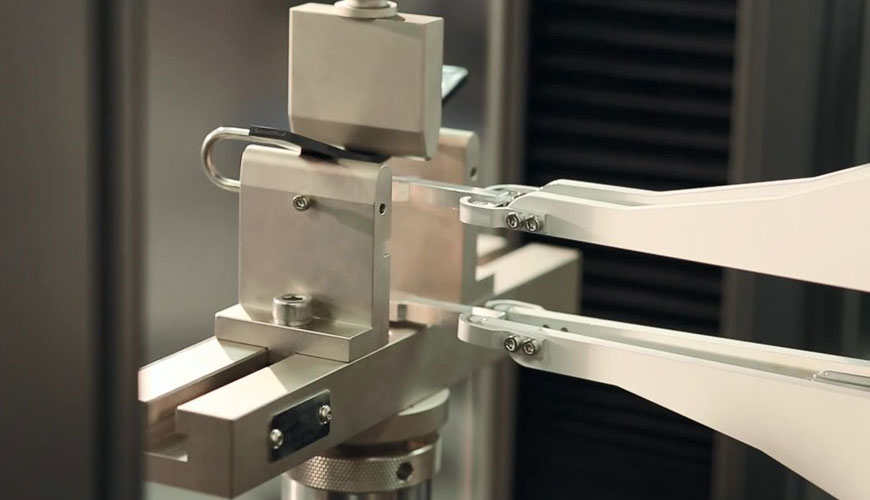

EUROLAB, with its state-of-the-art accredited laboratories and expert team, provides precise and fast testing services within the scope of EN ISO 6721-9 testing. This part of EN IS0 6721 describes a pulse propagation method for determining the complex tensile modulus E' storage component of polymers at discrete frequencies typically in the range of 3 kHz to 10 kHz.

The method is suitable for measuring materials with storage modules in the range of 0 GPa to 200 GPa and loss factors of less than 10 at about 0 kHz. Materials with higher losses introduce significant errors in velocity measurement through the reduction of amplitude. The method allows measurements to be made on thin films or thin fibers and long samples, typically 300 mm x 5 mm x 0,1 mm strips or 300 mm x 0,1 mm (diameter) fibers. This method may not be suitable for porous plastics, composite plastics and multilayer products.
Measurements are made from the velocity of a single longitudinal sonic wave in a longitudinally thin sample. The velocity of the longitudinal wave is determined by measuring the transit time of the sonic pulse between two transducers connected to the sample in the frequency range from 3 kHz to 10 kHz. A sonic pulse is delivered along the length of the sample. If the sonic velocity is measured on a long, thin sample, the velocity is independent of the sample geometry. The tensile storage modulus is calculated from the product of the sample density and the square of the sonic velocity.
Two Piezoelectric transducers with a resonant frequency in the range of about 3 kHz to 10 kHz should be mounted on the frame so that the vibration direction of each transducer exactly coincides with the direction of the position of the other transducer. A mechanical impact with longitudinal displacement in the test specimen is produced by the transmitting transducer. A pulse emitted from a test sample is detected by the receiving transducer. A transducer must be movable so that the distance between them can vary from about 50mm to 500mm and can be accurately measured up to +0,5% of the distance between the transducers.
EUROLAB assists manufacturers with EN ISO 6721-9 test compliance. Our test experts, with their professional working mission and principles, provide you, our manufacturers and suppliers, the best service and controlled testing process in our laboratories. Thanks to these services, businesses receive more effective, high-performance and quality testing services and provide safe, fast and uninterrupted service to their customers.
To get an appointment, to get more detailed information or to request an evaluation, you can ask us to fill in our form and reach you.